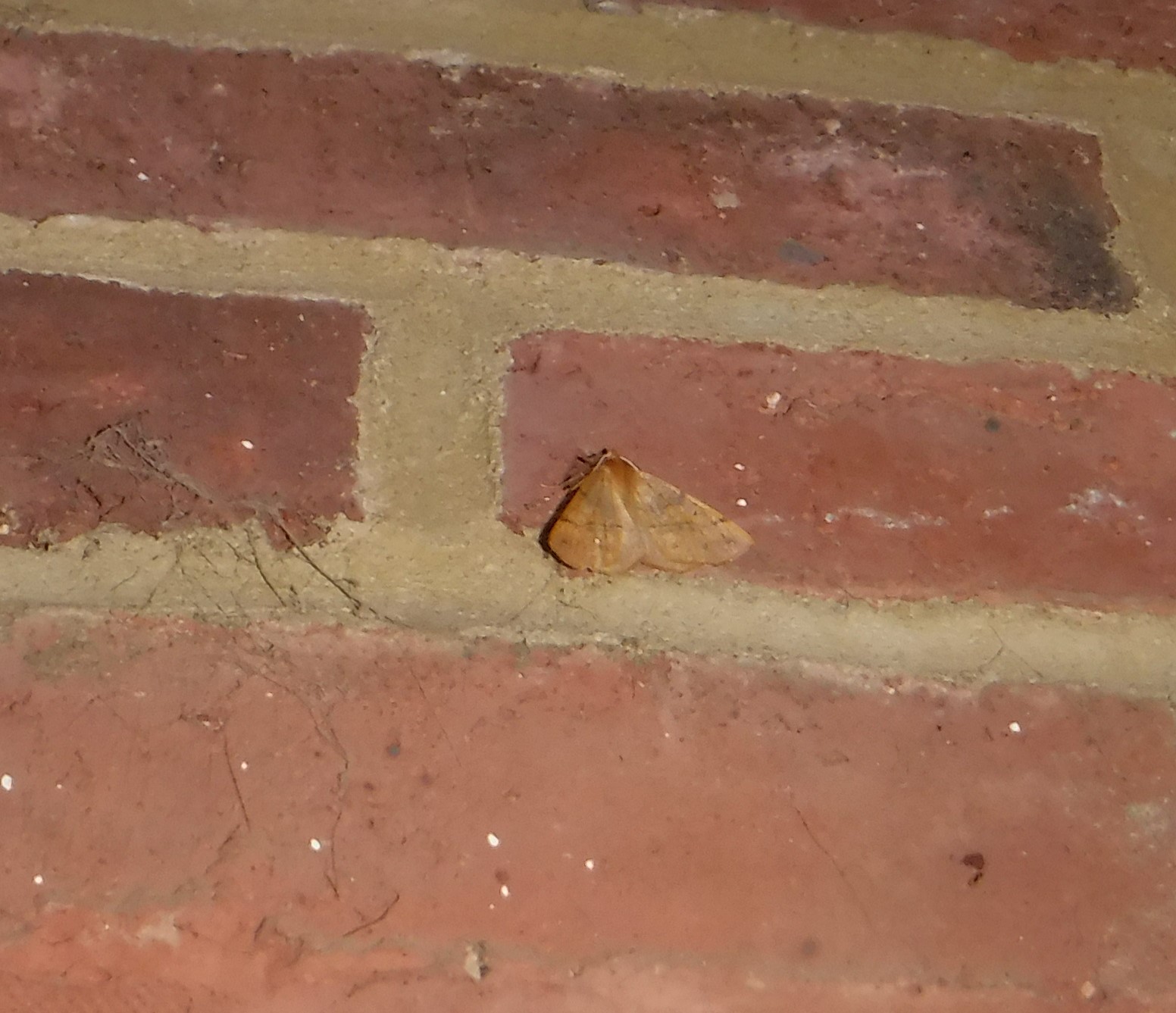
Total monthly rainfall: 68.5 millimetres. Maximum daily rainfall: 24 millimetres on 15th November.
Altogether there were 15 days when measurable rain fell, and 21 days with 100% cloud-cover for at least part of the day. There were strong winds on the 1st, 2nd, 14th, and 15th.
Maximum temperature on the warmest days was 16°C on the 1st,7th, and 9th. Maximum temperature on the coldest days was 8°C on the 5th and 30th.
During the month we lost the flowering knapweed on the19th and rough hawkbit on the 22nd. By the end of the month we still had white and red deadnettle, dandelion, daisy and oxeye daisy, creeping buttercup, yarrow, shepherd’s purse, Canadian fleabane, speedwell sow-thistle and nipplewort.
-
 Ancient oak in full autumn colour
Ancient oak in full autumn colour
Ancient oak in full autumn colour
Ancient oak in full autumn colour
-
 Feathered thorn moth in lighted porch
Feathered thorn moth in lighted porch
Feathered thorn moth in lighted porch
Feathered thorn moth in lighted porch
-
 Red oak last to shed leaves
Red oak last to shed leaves
Red oak last to shed leaves
Red oak last to shed leaves
-
 Woodland pond showing low water levels
Woodland pond showing low water levels
Woodland pond showing low water levels
Woodland pond showing low water levels
https://www.kentfieldclub.org.uk/news/little-barton-farm-wildlife-notes/nature-notes-november-2020#sigProId9daa81cfd7
Throughout the month we did not see a single butterfly, which we think is nothing short of extraordinary and reflects the unusually cloudy weather experienced during the month. We did, however, see late caterpillars in our vegetable garden – including large white among broccoli on the 10th, and almost certainly two clouded yellow on spinach leaves (21st).
There were also no day-flying moths around but we did have a probable December moth to light in our bathroom on the 21st, and a feathered thorn in our lighted porch on the 25th.
Our last migrant hawker dragonfly was seen among rushes around the lake on November 4th, and our last common darter was sunbathing on bur-reed during a brief bright spell on the10th.
One insect which did thrive during the month was a buff-tailed bumblebee, which appeared on ten days during the month – the last being the 28th – always on a garden garrya shrub.
Varying numbers of Canada geese continued to visit the lake throughout the month to see our white gander. Of particular interest were the 30 plus which arrived on the 10th containing three white geese – the only occasion this has happened so far. Also on the 10th we had our last sighting of a grey wagtail at our front woodland pond. Finally, we had a rare sighting of a lesser-spotted woodpecker feeding on the peanut container attached to the rose arbour in our front garden. It was there very briefly, being particularly camera-shy of Susan attempting to take a photograph through the kitchen window on November 30th.
We have two more miscellaneous sightings to report this month. On the 7th we came across fairy ring champignon in our woodland, while on the 11th, our grand-daughter walking the footpath in the field alongside our wood, spotted a fallow deer stag.
Development of autumn colours and progress into the bare trees of winter has been particularly prolonged this year. It continued as follows:
First coloured leaves appeared – Beech on 2nd.
Full leaf-colour – Horse chestnut on 2nd, ash (2nd), wild cherry (3rd), silver birch(12th), beech (14th),
willow(18th), hazel (18th).
Bare tree – Hornbeam (4th), ash (4th), hawthorn (5th) wild cherry (11th), oak (17th), silver birch (21st),
Hazel (22nd).
At the end of the month woodland ponds were still at a very low level, being some 40 centimetres below full capacity.

